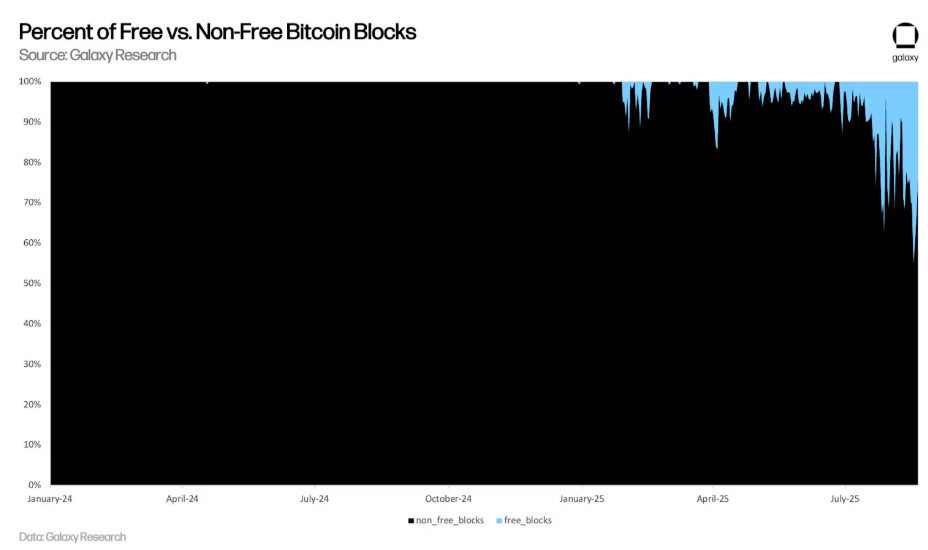Bitcoin transaction fees have fallen to their lowest point in more than a decade, highlighting a major shift in how the network is being used.
Glassnode data shows that the 14-day simple moving average of daily fees now sits at 3.5 BTC, a level not seen since 2011 when the protocol was still in its early adoption phase.
SponsoredWhy is Bitcoin’s Network Fee Declining?
Weaker demand for blockspace has driven the decline, reflecting Bitcoin’s broader shift in purpose. Investors now hold the asset primarily as a store of value instead of using it as a payment rail.
On-chain data confirms this shift. Public companies such as Strategy have aggressively expanded their Bitcoin holdings in recent months, positioning the asset as digital capital rather than a medium for everyday transactions.
For context, Galaxy Digital noted that Bitcoin’s mempool activity is lacking as the percentage of not-full blocks has spiked to nearly 50% at times in the past few months.
“These blocks fail to reach the maximum weight limit (4,000,000 weight units) despite room to include additional transactions. In short, the mempool, Bitcoin’s waiting room for pending transactions, is frequently empty, and when it isn’t, it’s full of transactions that don’t need to pay high fees to get processed quickly,” Galaxy pointed out.

The firm continued that after the 2024 halving reduced block rewards to 3.125 BTC, miners had expected transaction fees to offset lost revenue. Instead, the opposite has happened.
According to the firm, a subdued fee market makes it harder for smaller operators to remain profitable. This trend raises questions about the long-term economics of Bitcoin’s security model.
Beyond these technical changes, the current market structure also plays a role in the Bitcoin network fees cut.
According to Galaxy, the growth of custodial products such as exchange-traded funds and institutional derivatives has reduced the need for investors to transact directly on-chain.
Moreover, retail traders seeking high-volume activity — particularly in meme coin markets — are moving to cheaper, faster blockchains like Solana. These networks offer smoother execution than Bitcoin’s Runes ecosystem.
“If more BTC volume continues to migrate to ETFs, custodians, and fast alt-L1s, the core network risks becoming a settlement layer without sufficient settlement activity,” Galaxy warned.
Meanwhile, this development arrives at an interesting time when the blockchain network is enjoying significant adoption from institutions and governments globally.
As a result, Bitcoin’s price has climbed to a new all-time high of more than $124,000. There are also now increased projections that its value could reach above $1 million.

